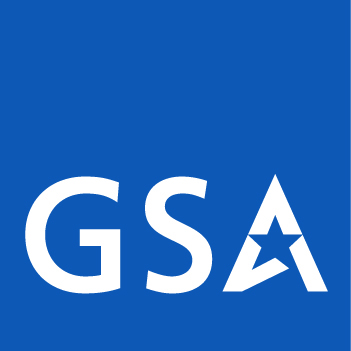As colleges and universities become more sustainability-focused when it comes to water know there is a difference between water conservation and water efficiency
Getting Singapore on the Water Saving Bandwagon
California's Water Strategy... from lessons learned by Orange County
Water is a serious issue for the cities of the world. Even in a wealthy nation such as the United States, people die from toxic water in Flint, Michigan, confront megadroughts in Los Angeles, face salinated aquifers in Miami and worry in Omaha about oil pipeline spills in the Ogallala aquifer. The American Society of Civil Engineers (ASCE) in its annual U.S. infrastructure report card gives U.S. drinking water a grade of D. Water is the greatest challenge in resiliency planning.
Southern California heavily depends on water from the Colorado River. Recent droughts have caused water levels at the Lake Mead, our nation's largest reservoir, to drop over 100 feet. Shockingly, the lake is at only 38 percent of capacity. It is only 4 feet above the legal emergency level of 1,075 feet. With droughts come more frequent and intense wildfires. For the past five years, California has experienced wildfires 12 months per year.
To read more from this article on GreenBiz.com, click here.
Let's Raise Awareness About Water Conservation
We’re Using Less Water Today than 50 Years Ago
Water Trivia You Always Wanted to Know
Because we are finally starting to think more about water—and ways to use it more efficiently—Waterless Co., manufacturer of no-water urinal systems, presents the following water trivia.
These are subjects most of us have wondered about at one time or another. Hopefully, the following brings some understanding:
· In the U.S., planners assume we will each use at least 70 gallons of water per day in the home and 35 gallons per day in the office.
· The average household uses about 300 gallons of water per day; 70 percent is used indoors and 30 percent is used outdoors.
· In urban areas, 75 percent of all water is used in homes.
· In the home, roughly 60 percent of all water is used to flush toilets, and to run showers and faucets.
· In an office, 40 percent of all water is used in restrooms, mostly for toilets and traditional urinals.
· The average American uses 9,000 gallons of water annually to flush 230 gallons of waste.
· Water wasted due to leaks totals about one trillion gallons annually in the U.S.
· New studies indicate that one waterless urinal saves 30,000 to 45,000 gallons of water per year, sometimes more depending on where it is installed.
· As to where the urine goes when using a no-water urinal, it flows below the trap/cylinder at the base of the urinal into a “U” tube to block odors; as it accumulates, it flows down a standard sewer pipe.
· A top-loading washing machine uses 30 gallons of water per wash.
· A front-loading washing machine uses 10 gallons of water per wash.
· It takes energy to deliver water. A faucet running for five minutes uses about as much energy as a 60-watt light bulb that has been turned on for 14 hours.
· Our peak year for water consumption in the U.S. was 1980 in which we used 440 billion gallons of water per day (BGD); by 2010 that declined to 350 BGD, due to water efficiency measures and new technologies.
· Water consumption increases with our incomes; a household making $150,000 annually will use about 30 percent more water than a household making $75,000 per year.
Note: Sources include The Water Footprint Network and the EPA’s WaterSense Program; all numbers are averages and can vary due to a variety of reasons.
About Waterless
Waterless Co. Inc. has established a well-respected reputation as being an innovative manufacturer of no-water urinal systems. Based in Vista, Ca, the 25 year-old company is the oldest manufacturer of waterless urinals in North America. The company’ manufacturers a full line of Waterless No-Flush urinals, cleaning liquids, and cost saving accessories. Visit: www.waterless.com
Why You Should Care About Water Conservation
Presenter: Steve Spencer
Channels: BSC Focus, Distributor Focus, Educational Quick Clips, Green Cleaning, Management, Standards, All Videos
How can the Earth be facing a water shortage when the planet is 70 percent water? And what does this scarcity mean for the cleaning industry? In this Educational Quick Clip, Steve Spencer explains how droughts are affecting drinkable water in the United States and elsewhere—and what changes might be in store for jansan professionals.
About the Presenter
Steve Spencer is a facilities specialist in cleaning and interior maintenance for State Farm Insurance Co. He is regarded as one of the nation's leading authorities on safety, health, and hygiene, and is a nationally recognized consultant, author, and speaker with more than 30 years of experience in the jansan industry.
http://www.issa.com/video#304
Ten Years Away and Counting: The World's Most Serious Risk
The World Economic Forum has just released its Global Risks 2016 report of likely risks and their potential impact on the world... The report concluded that the most serious risk within the next ten years regards water: while this can include flooding, what is expected to have more impact is that hundreds of millions of people will have limited or no access to safe drinking water.
The Cost of Water: Why It Keeps Going Up
The cost of water keeps going up as most facility managers know. In fact, in many cases, the cost of water is going up very significantly, with even higher costs anticipated in the future. For instance, in Chicago, the cost of water went up an average of 25 percent in 2012, and plans are now being discussed to double rates in 2015.


















